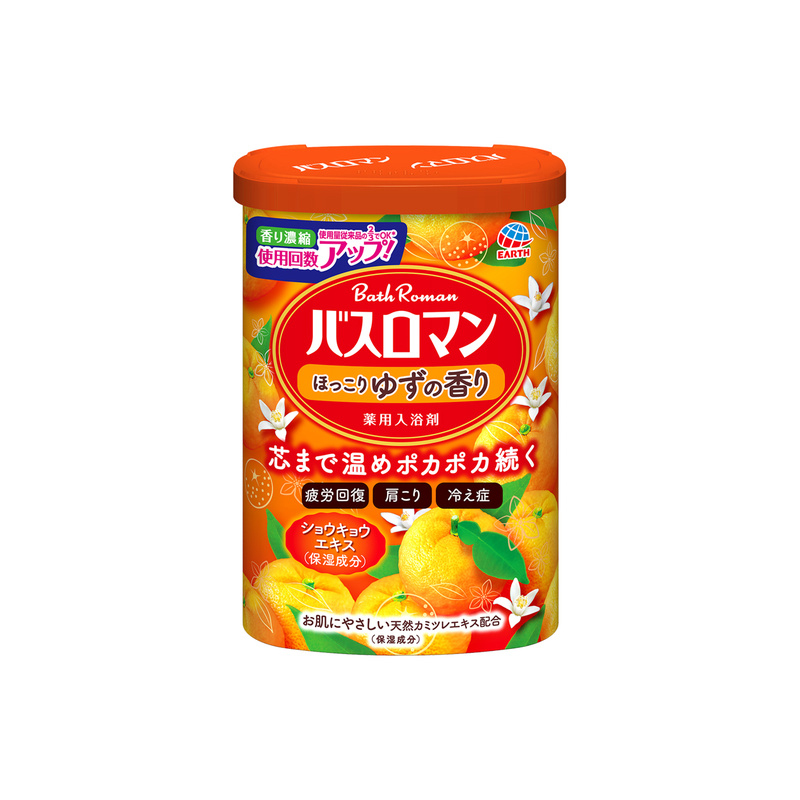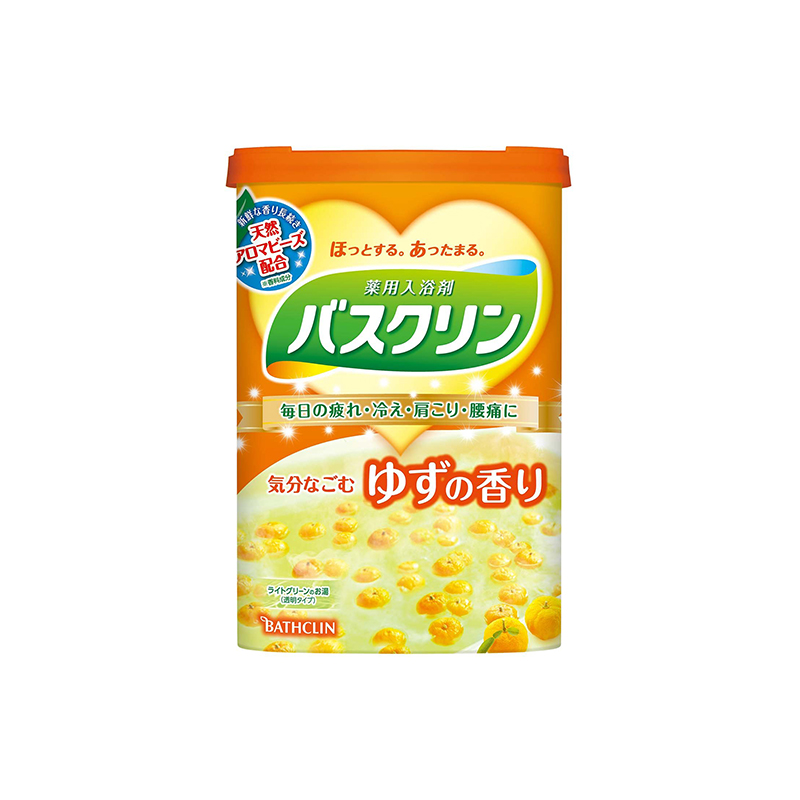What is a yuzu bath?
In Japan, there is a long tradition of taking a yuzu bath or yuzuyu (柚子湯) on toji, the winter solstice. This day marks midwinter and is the shortest day of the year. In the northern hemisphere this usually occurs around 22 December, at the peak of the yuzu harvest season.
Around this time, many public onsen (hot springs) and sento (public baths) add whole yuzu fruits to their bath water. Sometimes the fruits are added inside a cloth bag, are scored across the skin or are added to the bath sliced open, allowing the juice to mingle with the bath. The bright fruits float and bob around in the warm water, creating a pleasant citrus aroma. It’s also common to take this yuzu bath at home, adding the fruits to your own bath. In Japan, supermarkets increase stocks of yuzu in preparation for this tradition!
What is yuzu?
Yuzu (ユズ) is a citrus fruit commonly found across East Asia. It is believed the fruit originates from the Yangtze River Region in China and was brought to Japan through the Korean peninsula. Yuzu looks like a small grapefruit with a bumpy surface and is bright yellow in color when ripe. Grown on small trees they are incredibly fragrant.
What does yuzu smell like?
Yuzu has a delicate aroma with a distinct scent, often described as cross between mandarin, lemon and grapefruit. It is used in many ways; not only in cuisine but also in skincare products, aromatic oils and in the bath too!
Why do people take yuzu baths?
Japan has a long tradition of adding seasonal plants to bath water for both medicinal purposes and pleasure, and the yuzu bath is no exception. It is unknown exactly when yuzu first arrived in Japan, but records show it was around during the Asuka Period (593–710) and was originally grown for three purposes; culinary, medicinal and bathing.
What are the benefits of taking a yuzu bath?
Health benefits
As yuzu baths are typically taken during the chilly winter months, they warm the body and are said to promote circulation and reduce sensitivity to cold. Yuzu oil contains nomilin, which provides a relaxation effect and promotes this circulation. This is thought to ward off winter illnesses such as cold and flu. Yuzu baths also provide a soothing effect for those with arthritis, rheumatism and other muscle pains.
Beauty benefits
Yuzu are high in potassium, calcium, citric acid, vitamin A and vitamin C (they contain more than lemons!) In particular, the peel contains citric acid and vitamin C, which is considered beneficial for the skin. These help to soften skin, leaving it particularly smooth. This can help heal rough or chapped skin, though it can also irritate sensitive skin, so it’s important to be careful.
Well-being
Baths are typically taken in the evenings, so the soothing scent and warmth of the bath are said to relax the mind and help promote sleep. It is believed the bright fragrance has aromatherapy benefits and can aid in revitalizing and calming the mind. The bright yellow fruit are also thought to have warming properties as a form of color therapy.
Good luck
Taking a yuzu bath is also a ritual to bring good fortune in the coming year. When taking a bath on the solstice it’s common for bathers to say ichiyou-raifuku (陽来復), which loosely translates to ‘turn of fortune’. This means leaving all bad luck behind and from that day forward, have good fortune arrive with the coming spring. It’s believed this brings wealth and good health in the year ahead. The yuzu is a tough and hardy tree, ripening in winter and withstanding freezing temperatures. Many bathers hope this strong survival quality will also be passed onto them.
Some famous yuzu baths
The Izu Shaboten Zoo in Shizuoka pioneered the idea of keeping capybara in hot springs during winter and have treated them to yuzu baths every winter season since 1996. The sight of these capybara yuzu baths is a popular one. The concept also gained awareness abroad when a yuzu bath appeared in an episode of the television series Terrace House: Opening New Doors.
Can you eat yuzu? What does yuzu taste like?
Yuzu is a sour fruit so it is rarely eaten whole, but the zest and juice are commonly used as an ingredient in Japanese cuisine. They are tart in flavor, almost a combination of a mandarin and grapefruit. It’s used in many forms and dishes – such as sauces, syrups, marmalades, cakes and liquors.
Where to buy yuzu?
In Japan, you’ll easily find yuzu at your local grocers and supermarkets during the colder season. They are also relatively easy to find in South Korea and China too. Outside of these areas they can be harder to come by, though not impossible! I’ve occasionally spotted them at Asian grocers in other parts of the world.
How do you take a yuzu bath?
Taking a yuzu bath in Japan
If you’re lucky enough to be in Japan at the right time of year (the winter season, especially November and December) visit your local onsen (hot spring) or sento (public bath) and find out if they have yuzu baths. I’ll have my fingers crossed for you!
Creating a yuzu bath at home
If you have access to fresh yuzu fruits, fill up your bathtub with warm water and simply add the whole fruits to your bath; either loose or inside a mesh or cotton bag. If you’d like to enhance the aroma and water, you can also score the fruit skin or slice them in half before adding. Be sure to soak for at least 20 minutes! Purists recommend against substituting yuzu for another citrus fruit, as they don’t have the same benefits.
If you don’t have access to fresh yuzu, the next best thing is to add yuzu bath salts to your bath instead. These can help achieve the same relaxing aroma, water color and effects. Here are two Japanese products that can help you fill your bathroom with this unique citrus fragrance.
Yuzu Bath Salts: Japanese Brands

Bath Roman: Yuzu Bath Salts (Japanese Citrus) 850g
Bath Roman are a well established brand offering a wide range of bath salts. These salts have a fresh yuzu fragrance, turning the water is a milky yellow color.
Shop Now

Bathclin: Yuzu Bath Salts (Japanese Citrus) 600g
Bathclin are another well-known brands that have been producing bath powders since 1930. These salts also release a yuzu fragrance when added to your bath.
Shop Now
More from our series on Yuzu:









